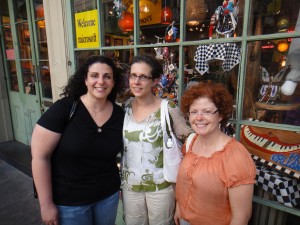The deadly clothing factory fire in Bangladesh last year might make an American feel complacent about workplace safety. While people in North America and Europe do benefit from occupational safety regulations, these regulations, in the U.S. at least, were written in the blood of victims of industrial accidents. One of the worst, and most transformative, of these was the fire at the Triangle Waist company in New York in 1911.
Von Drehle writes a gripping account of the events leading to this catastrophe that claimed 146 lives, the fire itself, and its aftermath. It gives quite an account of tenement living in immigrant communities in early 20th Century New York. While New York apartments today aren’t noted for their spaciousness, the tenements that were still in use at the time were crowded, often with shared toilets. (The Tenement House Act had only been passed in 1901 which, in new construction, mandated toilets in every apartment and open courtyards.)
Between the six-day workweeks and being paid piecework, workers at the time were feeling quite exploited. Most clothing manufacturers merely provided the workplace and equipment, contracting out the different production elements. A tailor, for example, subcontract the actual sewing to several seamstresses, Sewing machines would be powered by common overhead pulleys, and the cutting room had specially designed tables with compartments to hold the scraps of fabric and tissue paper to make cleanup more efficient. To prevent shrinkage, everyone had to line up at a single exit to be searched before taking an elevator down to the street level.
Although the workers at many of the waist companies had staged work stoppages, strong-arm tactics by management and an unsympathetic police force limited their effectiveness. The establishment at the time was not impressed with the strong-willed women like Clara Lemlich, Pauline Newman, and Fania Cohn. With a steady supply of new immigrants, there was also the fear that the employers would hire replacement workers.
The bins provided a perfect place for the tissue paper to kindle the fabric (with the help of an errant cigarette). Sprinkler systems existed, but weren’t required. All that was available to douse the flames were buckets full of water. Valuable time was wasted trying to douse the fire before calling the fire department. The employee exit design restricted egress, the eighth-, ninth-, and tenth-floor location of the factory was higher than fire ladders could reach, and the fire escape ended in an enclosed courtyard. Despite all this, many people managed to escape. One of the witnesses to the commotion was Frances Perkins, who became Franklin Roosevelt’s Labor secretary.
In the aftermath of the fire, occupational safety laws were enacted. A forerunner to what is now UNITE HERE was founded. The five-day week became de rigueur afterward.
Von Drehle, David,. 2003. Triangle : The Fire that Changed America. New York: Atlantic Monthly Press.










